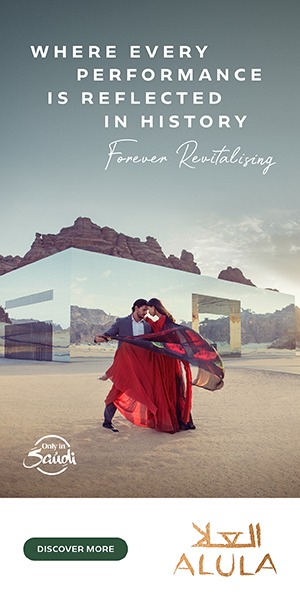A marked shift took place on March 31st, when Dior partnered with an Indian embroidery and craft house, Chanakya School of Craft, to show its Fall 2023 show in Mumbai against the backdrop of the Gateway of India. In that moment, the country went from an inspirational mood board for design houses to leading design through the threads and hands that worked on the collection in the ateliers. Key conversation themes simmered to the forefront after this event. The clearest rhetoric was that at a time when the rest of the world faced a luxury slowdown, India’s growing economy, growing wallet share, and increasing appetite for luxury was a beacon of hope for brands.
/elle-india/media/post_attachments/wp-content/uploads/2024/07/GettyImages-1478189354.jpg) Christian Dior Fall 2023
Christian Dior Fall 2023
Ever since, the onslaught of international luxury brands targeting the Indian consumer, at home and away, has been undeniable. We saw Ranveer Singh become the face of Tiffany & Co. Hermès launched beauty in India (their lipsticks quickly became accessories in handbags and on social media feeds). The brand also hosted talks for its niche clientele around the restoration works it has been carrying out of the iconic David Sassoon Library in Mumbai. More behemoth brands opened standalone flagship stores at the Jio World Plaza Mall in BKC, Mumbai including Cartier and Dior, and the royal family of Jaipur opened their palace to intimate dinners and rarefied experiences for a select few with brands like Ralph Lauren.
/elle-india/media/post_attachments/wp-content/uploads/2024/07/GettyImages-1486049349.jpg) Ranveer Singh at Tiffany & Co.’s New York Landmark
Ranveer Singh at Tiffany & Co.’s New York Landmark
But, we, as Indian consumers, are less trend-driven and more attuned to craft, emotion, storytelling and unique experiences. So, romancing us is a significantly more layered process. Smita Lasrado, a creative director instrumental in positioning brands democratically via their campaigns and visuals in the country (her latest work includes identifying new faces from different parts of the country for British luxury fashion house Jimmy Choo), attests. “While brands have understood that India is a new market with exciting opportunities, they also acknowledge that it is a completely different market. Hence, they will have to cater to that along with the fact that the buyer now wants to be seen and represented by the brands they’re spending money on,” she explains. The new campaign by the brand featured Princess Gauravi Kumari of Jaipur and ‘90s supermodel Lakshmi Menon at home in Goa as the new faces of the brand, alongside Bollywood celebrity Ananya Panday.
/elle-india/media/post_attachments/wp-content/uploads/2024/07/DIWALI-2023_LOVE-85-BON-BON_3x4.jpg) Ananya Pandayfor Jimmy Choo
Ananya Pandayfor Jimmy Choo
The recent past is peppered with examples of how brands have successfully tapped into our needs and desires. Even exemplifying the age-old axiom of ‘People don’t know what they want until you show it to them.’ Enter: The Canali Bandhgala. Luxury consultant Deepika Gehani, who worked behind the scenes with the brand for the unique launch in 2009, says, “Canali pioneered personalisation for the Indian market. This strategy aimed to make Indian consumers feel special and connected to the foreign brand. The primary goal was to tap into the needs of the wedding market, offering a bandh gala that catered specifically to Indian traditions and preferences. By doing so, Canali created a unique bond with Indian customers, ensuring their offerings resonated with the cultural and ceremonial significance of Indian weddings.” This, in turn, convinced other brands of a new path to the hearts and wallets of Indian consumers. Giorgio Armani launched an Achkan, Jimmy Choo focused on exclusive bridal capsules in gold and silver for an Indian clientele, including the ‘Chandra’ bag, Bottega Veneta launched 25 pieces of its famed Bottega ‘Knot’ exclusively for the Indian market, Coach offered a special monogramming stamp of dice and a diya for Diwali. Gucci, Louis Vuitton, and Michael Kors all followed suit, and even recently, BVLGARI launched its mangalsutra with Priyanka Chopra Jonas as the face.
/elle-india/media/post_attachments/wp-content/uploads/2024/07/Gauravifeed1.jpg) Princess Gauravi Kumari for Jimmy Choo
Princess Gauravi Kumari for Jimmy Choo
However, in the last 15 years, the profile of the Indian shopper has transformed significantly, and with it, a broader base of consumers with increased disposable income and aspirations has developed. This, in turn, points to a shift towards more diverse and widespread interest in luxury goods. “I believe the Indian consumer needs to be pampered year-round. It’s no longer just about Diwali and other festivals. They have a continuous desire to buy, and providing excellent service and collections on par with global standards will be key to winning their loyalty,” says Gehani. Everyone has done an exclusive India product and used Bollywood ambassadors and micro-influencers. “So what’s next?” she asks.
/elle-india/media/post_attachments/wp-content/uploads/2024/07/Bvlgari-Ayushmann-Khurrana-674_4x5.jpg) Ayushmann Khurana in BVLGARI B.zero1 Kada Bracelet
Ayushmann Khurana in BVLGARI B.zero1 Kada Bracelet
The answer, while not simple, is a clarified and unified voice. “While I see brands creating more events to build relationships with their audiences and more Indian faces not only in local advertising but also globally to honour the large Indian diaspora, I’d love to see brands empowering communities — either by working with artisans or helping support communities,” says Lasrado. “The Indian consumer is emotional, and I think for so long in fashion, we’ve seen a lot taken from us that this would be the right time for the brands to give back.”
/elle-india/media/post_attachments/wp-content/uploads/2024/07/Shibani-Dandekar-in-BVLGARI-Mangalsutra-1.jpg) Shibani Dandekar in the BVLGARI Mangalsutra
Shibani Dandekar in the BVLGARI Mangalsutra
Photographs: Getty Images
Read the full story on ELLE India’s new issue, or download your digital copy via Magzter.
/elle-india/media/agency_attachments/2024/12/12/2024-12-12t050944592z-2024-11-18t092336231z-czebsydrcd4dzd67f1wr.webp)
/elle-india/media/agency_attachments/2024/12/12/2024-12-12t050944592z-2024-11-18t092336231z-czebsydrcd4dzd67f1wr.webp)
/elle-india/media/media_files/2026/01/06/arts-and-culture_marayacouple_en_static_display_728x90-2026-01-06-15-30-18.jpg)
/elle-india/media/post_attachments/wp-content/uploads/2024/07/BANNER-IMG-2024-07-31T151757.629.png)
/elle-india/media/media_files/2025/12/18/arts-and-culture_marayacouple_en_static_display_300x250-2025-12-18-11-05-09.jpg)
